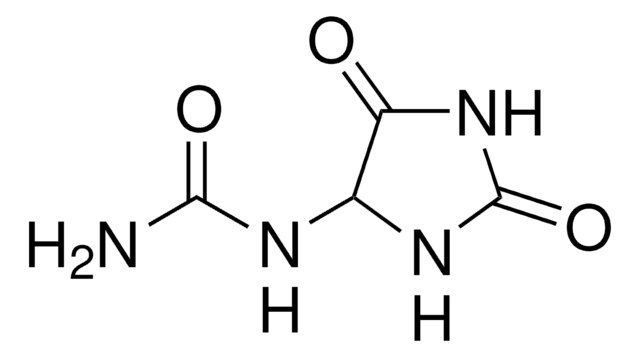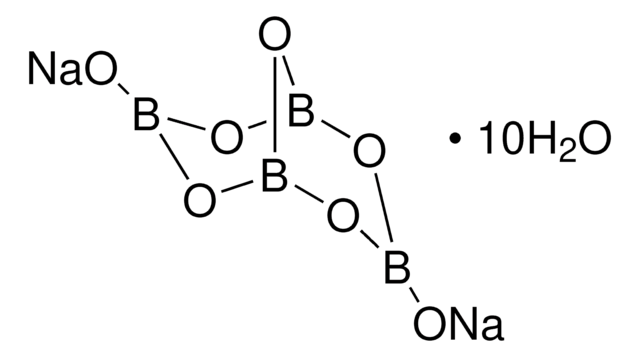B0394
Ácido bórico
ACS reagent, ≥99.5%
About This Item
Productos recomendados
grade
ACS reagent
agency
suitable for SM 4500 - NH3
suitable for SM 5210
vapor pressure
2.6 mmHg ( 20 °C)
assay
≥99.5%
form
powder
technique(s)
PCR: suitable
impurities
≤0.005% Insoluble in methanol
≤0.05% Nonvolatile with methanol
mp
160 °C (dec.) (lit.)
solubility
water: soluble
density
1.440 g/cm3
anion traces
chloride (Cl-): ≤0.001%
phosphate (PO43-): ≤0.001%
sulfate (SO42-): ≤0.01%
cation traces
Ca: ≤0.005%
Fe: ≤0.001%
heavy metals: ≤0.001% (by ICP)
SMILES string
OB(O)O
InChI
1S/BH3O3/c2-1(3)4/h2-4H
InChI key
KGBXLFKZBHKPEV-UHFFFAOYSA-N
¿Está buscando productos similares? Visita Guía de comparación de productos
General description
Application
- N-substituted cinnamamides via amidation reaction between cinnamic acid and benzylamines.
- β-Aminoalcohols through the regioselective epoxides ring opening with aromatic amines in the presence of glycerol as a co-catalyst.
- Organosulfur compounds via thia-Michael addition of thiols to α, β-unsaturated compounds.
signalword
Danger
hcodes
Hazard Classifications
Repr. 1B
Storage Class
6.1C - Combustible acute toxic Cat.3 / toxic compounds or compounds which causing chronic effects
wgk_germany
WGK 1
flash_point_f
Not applicable
flash_point_c
Not applicable
Elija entre una de las versiones más recientes:
Certificados de análisis (COA)
¿No ve la versión correcta?
Si necesita una versión concreta, puede buscar un certificado específico por el número de lote.
¿Ya tiene este producto?
Encuentre la documentación para los productos que ha comprado recientemente en la Biblioteca de documentos.
Los clientes también vieron
Artículos
Information on Isoelectric Focusing including what it is and how it is used. In order to ensure the high performance of analysis, isoelectric point (pI) standards are needed.
Nuestro equipo de científicos tiene experiencia en todas las áreas de investigación: Ciencias de la vida, Ciencia de los materiales, Síntesis química, Cromatografía, Analítica y muchas otras.
Póngase en contacto con el Servicio técnico







